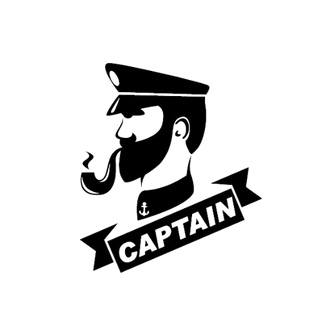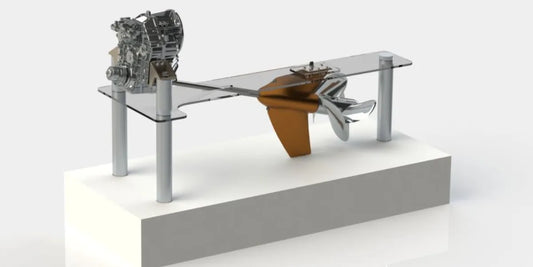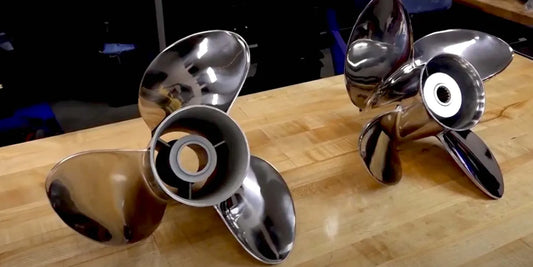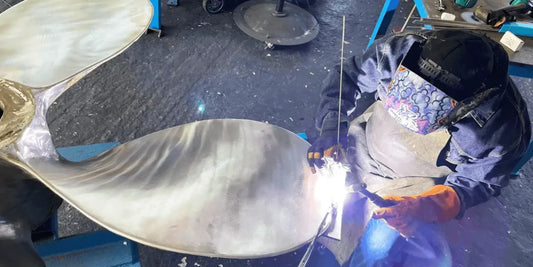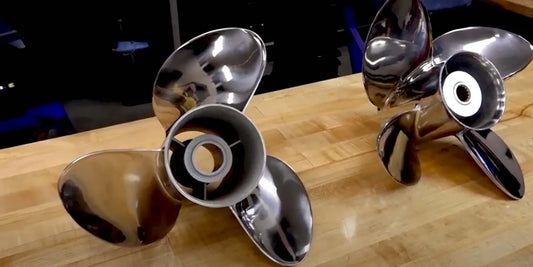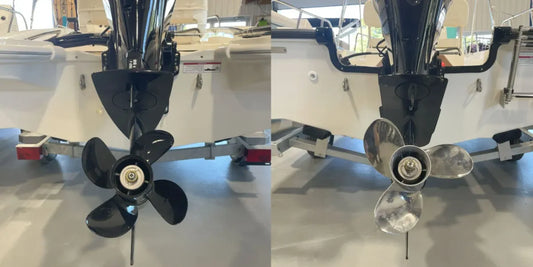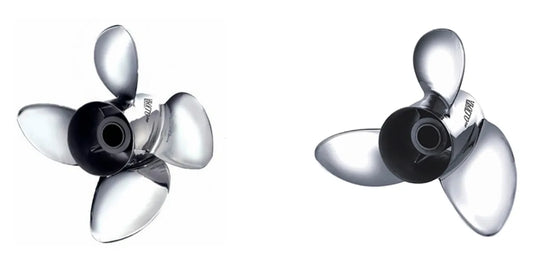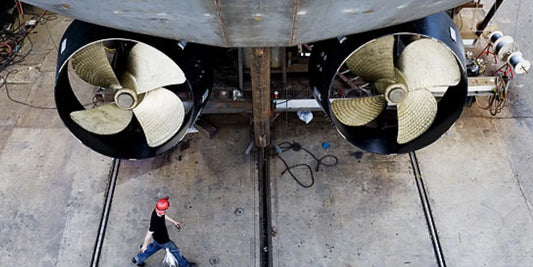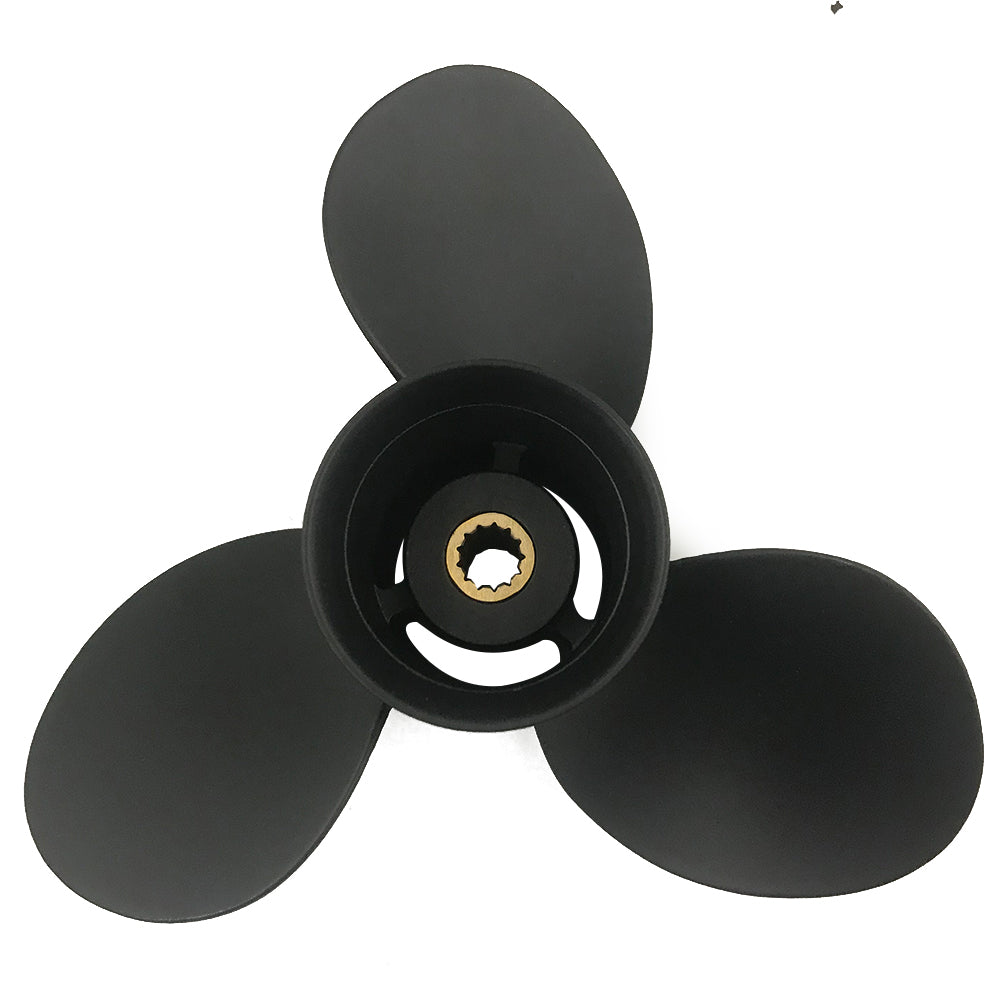The Volvo Penta Propeller Calculator is a massive win for every boater seeking the best performance on the water. Whether an expert or a weekend navigator, the choice of propeller is essential for efficiency, speed, and fuel economy. However, there are too many factors to consider—whether it be engine type or boat weight—making getting the right fit an overwhelming task. To this end, the precision-based and user-friendly Volvo Penta Propeller Calculator aids in the process. This article highlights the significant advantages of this invention in enhancing the functionality of your vessel, thereby promising a relaxed and enjoyable experience on the water. Read on to discover how this intelligent solution can elevate your water fun.
Understanding the Importance of Propeller Size

How Propeller Size Affects Boat Performance
The size of a boat propeller, particularly diameter and pitch, is the primary determinant of outright performance, efficiency, and handling. An adequately balanced prop will ensure that your engine runs at the optimal RPM values, which improve fuel efficiency and prevent stress on the engine, potentially leading to expensive repairs. For one, a larger diameter propeller in slow-speed mode provides more thrust, making it suitable for heavy boats or towing work. In contrast, smaller diameter propellers increase speed for lighter boats.
Also, the pitch, which is the distance that the propeller moves the boat in one revolution, affects acceleration and top speed. A higher pitch may generate a higher top speed with less effort, accelerated by the engine at cruising power, but it reduces acceleration. Conversely, a lower pitch may accelerate more quickly but at the cost of a possible higher top speed. Adjusting these settings will enable your boat to operate smoothly, whether it is navigating flat calm waters, high waves, or carrying heavier loads. A balance between the prop size means a boat owner gets power, efficiency, and performance.
How to Choose the Right Size for Your Volvo Penta
Choosing the correct propeller size for your Volvo Penta engine involves several factors that depend on the engine's RPM, the type of boat, and its intended use. The ideal propeller operates the engine within the manufacturer's specified range for optimal efficiency and longevity. A boat for water sports could be improved with a higher-pitch and larger-blade-area propeller to generate more thrust and responsiveness. However, a heavier boat would typically require a propeller with a low pitch so that sufficient power is available even at low speeds.
Studies have shown that 3-blade propellers strike an approximate balance between speed and fuel consumption for general recreational use, whereas 4-blade setups offer better control and smooth operation in rough sea conditions. Next, the materials are a source for concern; aluminum propellers are lightweight and inexpensive, whereas stainless steel ones offer durability and the ability to endure rough conditions. Thus, understanding the above will help you set a propeller size according to your boating style, bridging optimal performance with an extremely smooth experience.
Most Common Errors When Sizing a Propeller
Probably one of the most common errors in propeller sizing is choosing an improper pitch, which can result in engine strain or insufficient speed, or vice versa. A too-high pitch will render your vessel slow to gather speed while overworking the engine, whereas a pitch that is too low has the engine revving too much and wearing out sooner. Not considering boat weight and load is another oversight. Failing to consider the added weight from passengers, gear, and fuel may cause the chosen propellers to under- or over-perform, reducing efficiency and maneuverability.
Poor consideration for ventilation and cavitation is yet another. If there is ventilation, you will see air or exhaust gases coming from the water around the propeller blades, which reduces thrust and causes fluctuations in speed. In contrast, cavitation forms vapor bubbles in the water around the propeller blades, eroding the propeller itself and hindering its performance over time. Having a grasp of these makes for a smoother and more efficient boating experience.
Lastly, not considering the nature of local waters, whether rough or debris-filled, tends to lead to a lot of propeller damage. For instance, aluminum may not withstand the test as well as stainless steel in rocky or debris-filled environments, the latter offering a better edge in durability and performance under harsh conditions. The selection of the right propeller should be made considering a compromise among pitch, material, and environment for optimal results.
Using the Volvo Penta Propeller Calculator

A Stepwise Operation for Using a Calculator
Use the Tool: Access the Volvo Penta Propeller Calculator through the official website page. It's designed to simplify the process of selecting the right propeller for your boat based on your input data.
Enter Boat Specifications: Please fill in the boat information according to your vessel's classification, weight, engine model, and maximum RPM. This ensures that a calculator recommendation pairs up with its performance characteristics to meet the specific needs of your boat.
Define Usage Requirements: You must specify what you'll be using the boat for. Possible uses include cruising, fishing, towing, etc., all of which affect the indexed performance, such as speed, thrust, and fuel efficiency.
Consider the Market: If you considered an array of water conditions and load conditions, the rough water or average load would allow the calculator to provide an output closer to real conditions.
Check the Listings: The calculator presents a list of propeller options tailored to your needs, based on your inputs. These options can be ranked according to compatibility, material type, or performance advantage to facilitate data-driven recommendations.
Compare and Analyze the Options: With a detailed explanation of the basics for each recommended propeller option, including pitch, diameter, material, and estimated resale value, your tool clears up the confusion between basic and advanced choices.
Consult More Sources if Needed: The recommendations provided by the calculator are factual and reliable; however, you may want to complement them with further analysis, interaction with certified marine performance data, and consultation with a professional for additional advice.
Settle on Your Choice: At this point, you have been able to agree that the option offered concerning the Volvo Penta Propeller Calculator answers your needs in most respects, and you can note down the propeller details and negotiate with your local dealer for an installation or buy any propeller from them. This will help in the overall performance of the boat when properly installed and maintained.
By combining technical calculations with an intuitive user interface, the calculator makes propeller selection effortless, allowing you to focus on optimizing performance for your boat.
Features of the Free Volvo Penta Calculator
Technical Precision: Utilizing advanced algorithms, the calculator provides propeller recommendations tailored to a specific boat and engine installation, enabling optimal performance and results.
User-Friendly Interface: Designed with simplicity in mind, the calculator is easy to navigate, even for users with minimal technical expertise.
Comprehensive Data Analysis: Integrating up-to-date industry knowledge, the tool evaluates the most crucial factors, such as boat type, weight, and engine power, and then provides precise and actionable recommendations.
Customized Results: Yield suggestions specific to your input and, therefore, save time and eliminate confusion from the propeller-selection standpoint.
Easy Comparisons: Enable you to make side-by-side comparisons of diverse propeller options, allowing you to make a well-informed decision.
Endless Updates: Ensures updates that reflect the current technical standard and product offerings, providing a reliable and up-to-date result.
The above features render the Volvo Penta Propeller Calculator as a reputable one to use in enhancing a boat's performance with ease and confidence.
Optimization of the Calculator
The Volvo Penta Propeller Calculator was created not only to ease the decision-making process but also to maximize the boat's performance with precision. Due to continuous updates to technical specifications and advanced algorithms, the calculator produced results that were nothing short of precise, giving users an advantage in creating detailed guides to choosing the correct propeller for their specific requirements, such as enhancing fuel efficiency, maximizing speed, or achieving smooth cruising. Thus, aiming to grant them a capacity for masked choice to adapt to the particular preferences of where they want their performance requirements to be centered on their operational activities.
One of the remarkable features of the calculator is its ability to present all the details related to the data provided to the user simply and understandably, which in turn builds confidence when making a decision. The input parameters include engine type, boat size, usage scenarios, and specific conditions, among others. Meanwhile, the properties ensure that these are transferred onto an output that is fine-tuned to your attention to particular detail. Proceeding with simplistic navigation, the platform instantly provides critical data that would interest both established professionals and newcomers, with topics ranging from trends in efficiency comparisons to optimization of speed. Thus, unlike anything encountered before, it has brought an incredible amount of detail to the decision-making process.
Integrating the latest technical advancements and industry standards makes this calculator both the most accurate and the most user-friendly. Even making minor changes to propeller choice, which are relevant to design, will ensure the highest level of performance, a level that even undergraduate students cannot guarantee alone.
Maximizing or making the calculator more efficient can, therefore, be used in activities related to upgrading your existing layout or searching for new setups.
Finding the Right Propeller for Your Boat

Buying a Propeller: Factors to Consider
Other considerations in selecting the propeller are essential in determining the craft's performance and efficiency. Here are some factors:
Propeller Size (Diameter and Pitch): The Diameter and pitch of the propeller obviously have a greater bearing on the engine power transfer to the water. Typically, larger diameters provide more thrust; higher pitch facilitates speed and acceleration. A good balance between these two will give excellent performance relative to the intended use.
Number and Design of Blades: The number of blades on the propeller can vary from three to five. Hence, fewer blades typically allow for higher speeds as well as greater efficiency, while more blades offer smoother working and handling performance in choppy waters. Blade geometry and cup design will also influence the way the propeller sucks water and on its overall performance.
Material Composition: Typically, propellers are made of aluminum or stainless steel. Aluminum propellers are typically lightweight and inexpensive, making them perfect for recreational use. Stainless steel propellers, however, are designed for high-performance operations, offering excellent durability and resistance to corrosion in harsh environments.
Engine Power Compatibility: To achieve optimal performance from a propeller, the engine's horsepower and operating range must be matched. If the prop is chosen that is not suitable, it could cause its engine to work harder and lower the fuel efficiency, or it simply will not go fast enough.
Boat Type and Usage: Every type of boat has unique performance requirements. For instance, fishing boats require torque for better handling at low speeds, whereas recreational speedboats will generally require top speed and acceleration. Knowing what your boat is primarily used for will help make choosing a propeller much easier.
Operational Environment: Operating environments, such as salinity, currents, and water depth, will significantly affect propeller performance. Shallow water will require a propeller designed to withstand the water's strength to avoid damage caused by rocks or debris. Whereas, when used in saltwater, a good choice will be corrosion-resistant materials.
By giving due consideration to all these aspects, one can ensure that the chosen propeller would enhance performance, fuel economy, and the strength of the vessel. Making the right choice will, therefore, improve the entire boating experience, as well as prolong the lifespan of the propeller and engine.
Volvo Penta Prop Options Compared
A never-ending line of propeller options from Volvo Penta was relentlessly forced to accommodate different boat requirements under varying marine conditions. These include single, twin, and even triple designs, each tailored to specific applications in speed, efficiency, and versatility.
The F7 DuoProp is a popular choice among those seeking higher speed. It features a dual-propeller system that provides impressive acceleration and grip while minimizing vibrations. It is, therefore, very suitable for sports boats or those used for water skiing activities. The IPS propellers, on the other hand, will attract larger vessels, aiming for fuel efficiency and ease of maneuverability. The forward-facing system reduces drag, increasing propulsion and resulting in a smoother ride and quieter system.
Feathering propellers, like the Volvo Penta Folding Propellers, are often chosen by sailboat owners to reduce drag when not in use. This contributes to improved sailing performance without compromising engine power in light wind conditions.
Another decisive factor in selecting a suitable propeller is the choice of material. Stainless steel types are renowned for their exceptional durability, superior strength, and corrosion resistance, particularly in environments with high salt content. Alternatively, aluminum propellers are a more economical option and, without compromising on performance, present a good choice for individuals on a budget.
Furthermore, Volvo Penta's proprietary propeller chart provides a precise indication of the correct size and pitch for a specific hull and engine model, ensuring that the propeller aligns with the engine's power curve to enhance propulsion efficiency and vessel handling. Utilizing the right prop option not only increases performance but also leads to cost savings down the road due to enhanced fuel economy and less wear on the mechanic.
Where to Shop for Good Propellers
When in the market for a quality propeller, remember to opt for reputable suppliers that offer brands and materials trusted by the manufacturer for your specific vessel. Marine supply stores, both online and in-person, provide a wide variety of propellers to cater to different engine types and performance requirements. Trusted sites will feature top filters for size, pitch, rotation, and material, allowing customers to find a manufacturer-approved product that suits their engine and hull type.
Some manufacturers will allow direct purchase through their sites, ensuring genuine parts and access to expert advice. Seek out retailers that provide prop compatibility checking and detailed product specifications to ensure the prop matches your engine's power curve and intended usage. And never neglect to read customer reviews and consider the strengths of various models to assess their performance and sustainability in your hands, ultimately giving you the best option that balances efficiency, durability, and price.
Benefits of Using the Volvo Penta Propeller Calculator

Improving Fuel Efficiency
The Volvo Penta Propeller Calculator is a vital tool for maintaining fuel efficiency, helping boat owners select the ideal propeller for their vessel's specific needs. By considering variables such as engine operating regime, hull types, and usage, the calculator ensures that the chosen propeller increases thrust and reduces drag. Such performances enable smooth rides with a significant decrease in fuel consumption, making them an obvious choice for daily boating. Hence, it optimizes the waste of energy so that every bit of energy contained in one drop of fuel can be efficiently used to power the vessel.
Recent developments have instilled accuracy into the system through algorithms that consider real-world boating conditions, including factors such as load weight, cruising speeds, and sea states. For example, the correct pitch and diameter ensure the boat does not overload its engines, an overloading being one of the major unnecessary fuel-burning processes. Research indicates that a more precise match between the propeller and the engine's optimal RPM range could increase overall fuel efficiency by up to 10-20%. In this regard, therefore, this innovative tool is both environmentally friendly and cost-effective over the long term, as the reduction of operating costs and an increase in engine life will prove advantageous.
Increasing Boat Speed and Handling
Boat speed and handling can be enhanced if precision is applied while the proper set of tools is assigned to specific vessel characteristics. The right propeller choice can be fine-tuned with an advanced tool such as the Volvo Penta Propeller Calculator to optimize speed and handling for a boat's length, weight, and engine power. A well-matched propeller provides smooth acceleration, improved top speed, and enhanced control, allowing the ship to handle various water conditions while ensuring better handling that protects the engine from stress and prevents inconsistent performance in situations requiring tight turns, high-speed cruising, and docking maneuvers.
Unoptimized boat handling may yield increased drag, decreased stability, and wasted energy during operation. The right propeller helps combat inefficiencies while enhancing responsiveness and agility on the water. It promotes better control, especially in adverse conditions or when making immediate course corrections, by utilizing propeller designs with advanced blade geometry and materials that reduce cavitation and vibration. Investing in understanding and optimizing propeller performance is therefore essential to maintaining both speed and accuracy of handling, thus improving the boating experience.
Reducing Wear & Tear on Your Engine
Any wear and tear on your boat's engine should be minimized to maximize its actual lifespan and functional performance. Regular maintenance is one of the major options for this, with oil changes, filter replacements, and component inspections, such as those for belts, hoses, and spark plugs, being identified as the primary ones. Proper lubrication helps reduce friction and prevent heat buildup, thereby ensuring smooth operations under intense conditions. Other practices include cleaning the boat's engine at intervals to remove salt, grime, or debris, which may aid in preventing corrosion in marine environments where moisture exposure can occur.
Another vital aspect regarding "wear minimization" is keeping your engine within the RPM ranges it has been assessed for. Running it much harder for a long time is an excellent recipe for overheating or lowering the component, whereas underloading gradually builds up carbon that damages efficiency. Propelling your boat with a suitable propeller will also help in minimizing wear and tear on the engine. A well-fitted propeller of the correct pitch allows the engine to operate at its best RPM, and this enables it to work efficiently with optimum fuel consumption.
Lastly, proper storage and good care during the off-season or periods of inactivity are equally beneficial for the engine. Draining fuel and using stabilizer, flushing the cooling system, and storing it in a dry, covered area all contribute to maintaining the engine. By combining the daily upkeep with some wise manual habits, you can minimize wear and tear on engines, ensuring their reliability and operational capacity for the years to come.
Case Studies: Successful Propeller Sizing with Volvo Penta

Real-World Instances of Performance Enhancement
While optimizing boat performance, I became aware of how a well-chosen propeller size, as recommended by Volvo Penta, can positively influence performance. This is particularly evident, for instance, on one occasion when I felt the need to change the factory-set propeller to a custom one for enhanced fuel efficiency. After consulting with the Volvo Penta specialist regarding the propeller size and pitch selection based on my boat's engine specs, typical load, and usage, the results of the change surprised me. The fuel consumption decreased by 15%, and indeed, it was more comfortable to handle various conditions, especially when cruising at mid-range speeds.
Another type of performance enhancement occurred when I advised a friend to make a change in propeller sizing, for he often had difficulties with slow take-offs. The poor father was underperforming because it had been fitted with a propeller of inappropriate pitch for towing water sport equipment. After changing to a Volvo Penta with a pitch for acceleration and load, the boat was quicker to plane, and his experience improved significantly. We were both surprised at how slight adjustments could dramatically improve performance and make our time on the water even more enjoyable.
Such occurrences demonstrate that proper adjustments, such as selecting the correct Volvo Penta propeller, will provide maximum efficiency in power and reliability. From all my experiences with propellers and emphasizing the importance of adequate sizing, I can personally vouch that even the most minor changes can have a significant impact on fuel economy, proper operation at desired speeds, and usability tailored to individual needs.
Satisfied Boaters' Celebrations
Having been boating for many years, I can tell you from experience that the right Volvo Penta propeller has dramatically improved my enjoyment on the water. I had always struggled with fuel efficiency and maintaining uniform speeds, making long trips more aggravating than pleasurable. After consulting an expert and installing the right propeller, the difference hit my senses immediately. My boat is now incredibly smooth; it uses very little fuel and achieves ideal performance at various speeds. It feels like I am getting the best of my boat every time I go out there.
Another story I remember; another boater related it to me. They were experiencing high engine strain and sluggish speeds, even with the relatively new vessel. After installing a correctly sized Volvo Penta, they realized how much it had changed. The engine stopped straining and started reaching speeds the owners never thought were possible for their boat. Suddenly, they also caught a whiff of a decrease in fuel consumption, making every trip far more affordable and fun.
These stories, including mine, illustrate the importance of having the correct parts for your boat. Whether you're headed across calm lakes or cruising down the coast, the right propeller could mean significant gains in performance, reliability, and overall satisfaction. It's a minuscule issue that brings about huge returns, keeping every day out of the water enjoyable and efficient.
Lessons Learned from It's Not Size-Perfect
One of the most significant lessons I've learned about propeller sizing is the importance of thorough research and adherence to precision. Not picking the right size propeller can cause anything from lessened fuel efficiency to terrible handling of the vessel, and in the most fatal circumstance, it will strain an engine. Even during my early days of boating, I grossly underestimated the importance of having a propeller made to fit exactly my vessel's specifications. I learned the hard way that any deviations in pitch or diameter can noticeably affect performance. Eventually, through asking for advice and testing different sizes, I realized that one must understand and know the major performance metrics, such as RPM ranges, to achieve the desired load and hit specifications that fit.
Moreover, another significant insight is to avoid making assumptions about one-size-fits-all solutions when it comes to propellers. Factors such as the weight of the boat, the horsepower of the engine, and the purpose—whether it's for speed, cruising, or towing—are what's critical to consider when sizing. I once chose a propeller based solely on a recommendation without considering any of those factors, and it didn't work as well as I had wanted, leaving me pretty frustrated. From those experiences, I learned to depend on concrete data, and I usually ask reliable sources or professionals who have a deep understanding of the dynamics of props. By taking the time to measure precise specifications against my boating needs, I have managed to improve efficiency and decrease engine strain, allowing for greater enjoyment during my time spent on the water.
Lastly, I learned that even if you find the perfect size prop, you must continue to monitor and maintain it regularly. Over time, damage, wear, and environmental conditions could hinder its performance. By staying proactive and keeping the prop in good condition, I have gone a long way to steer clear of repeating previous mistakes and ensure smooth sailing in every trip. These are priceless lessons that have transformed how I approach boating, with a strong emphasis on making informed decisions for a lifetime of benefits.
Reference Sources
- The Art of Performance - Propellers - Discusses optimal efficiency, handling, and propeller grip benefits.
- Volvo Penta Propeller Calculator - Lino - Explores functionalities, benefits, and practical applications of the calculator.
- Volvo Penta Propellers Guide - Highlights benefits like increased sailing speed and reduced drag.
- Propeller Calculator - Help Sizing a Volvo Penta Prop - Provides insights into the calculator's role in precise propeller sizing.
Frequently Asked Questions (FAQs)
What is a Volvo Penta propeller calculator?
This tool enables a boat owner or marine engineer to determine the ideal propeller size and type for their specific boat. Upon entering the different parameters of power, gearbox ratio, and load, the calculator provides the most suitable recommendations for the propeller that will deliver optimal performance. This ensures that the particular propeller meets the vessel's specific requirements, thereby increasing efficiency and speed. The accuracy of the calculations will safeguard against damages and ensure a comfortable marine experience. Many online shops offer these calculators, thereby facilitating the search for the appropriate propeller according to the given specifications.
How do I determine the correct propeller size for my vessel?
The correct size of the propeller for the vessel is determined using a Volvo Penta Propeller Calculator, which considers the engine power output, the type of gearbox, and the expected load. Once these parameters are inserted into the device, a calculation is performed to determine the propeller size and pitch that best fit this description. Choosing one that fits the vessel's physique is imperative, as a poor choice could affect the ship in either its cavitation or fuel consumption process. One can learn more about specific types of propellers from a marine engineer, including those that best fit a particular vessel design. Great care should be taken to ensure that the propeller is a genuine part supplied and installed to meet the warranty requirements and performance standards.
How does the propeller pitch difference affect performance?
Pitch changes performance by moving the vessel a certain distance with each engine rotation. With a higher pitch, you achieve greater speed; a lower pitch yields good acceleration and torque. As there are many types of marine craft, it is essential to determine the pitch ratio at the time of selecting the propeller, considering the engine's power and the vessel's intended use. The result of an incorrect pitch selection is either excessive or insufficient engine load, thereby hindering performance. Hence, it becomes beneficial to understand the performance that will come with various pitch sizes.
What is the best type of propeller for an outboard engine?
Invariably, the suitable propeller for outboard engines depends on its specific use and the engine's power rating. Typically, aluminum or stainless steel propellers are found in the market, with the stainless steel version being more durable and apt for high-speed applications. Using a Volvo Penta Propeller Calculator, one can determine the optimal size and pitch of the outboard engine based on load and speed requirements in knots. You should consider what sort of boating experience you'd like to have and what the waters you'll be navigating look like to decide on the best propeller type. Moreover, the propeller should be designed for an outboard model to ensure that it avoids damage and compromises on the best performance measures.
How do I ensure my propeller is correctly supplied and installed?
To ensure your propeller is supplied and installed correctly, purchase it from a reputable store that specializes in marine parts. When selecting a propeller, consult with others who are familiar with what will work best for your specific vessel's needs and specifications. Each step of a proper installation will maximize your efficiencies and avoid possible damage to your propeller. Consider having a certified marine technician install your propeller; they will make the necessary adjustments to achieve the finest outcome. Then, read the warranty directory with a fine-toothed comb, so that your needs are met if any troubles occur from ill-fitting or sincere shortcomings.
What is the importance of propeller load calculations?
The propeller load calculations are crucial in determining the maximum weight that can be given to the propeller to maintain optimal performance. This implies that these calculations are carried out to verify the propeller's loading power, ensuring it can push the vessel efficiently without overloading the motor, thereby preventing severe damage to the boat. The use of a Volvo Penta propeller calculator ensures that input parameters are laid out according to the vessel type and the engine's power to provide the most accurate load recommendation. It is of great importance for marine engineers and boat owners to know the load capacity, so they can avert arising performance problems and ensure safety on the water surface. Proper load calculations ensure smooth sailing for the vessel, improve fuel consumption, and contribute significantly to the vessel's overall efficiency.
